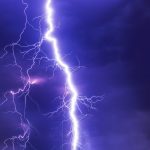Despite being mechanically, physically, and linguistically distinct, devils and demons are lumped into the same category of fiend in Dungeons & Dragons. That can make it a little bit challenging when you want to find a strictly demonic entity, but we’re here to dive into some of D&D’s best demons so you can get an idea of what we mean!
Table of Contents
What Makes A Demon?
As we noted, demons are labeled fiends, and when spells, magical items, or other features mention a creature type, you’ll want to choose fiend even if you aren’t aiming for devils. Demons are known for speaking Abyssal and don’t originate from the Nine Hells (that’s devils), but the Abyss. However, they do have a lot in common, like their typical resistance or immunity to fire and poison damage.
The Monster Manual categorized demons by power level into six discrete labels, with the weak ones (like barlguras and vrocks) at level 1 to balors and goristros at level 6. This isn’t related to their individual CRs, though; it’s just a way to separate them from a narrative perspective.
You might think that pouring some holy water on them will make all the difference, but, unfortunately, neither that nor radiant damage does anything special. There is no vulnerability to holy damage, but there are other ways to put the baddie down for good.
Summoning Demons
There are plenty of fun conjuration spells that can help you out during a fight. One of the most popular are the summoning spells for demons or fiends in general. The spell summon lesser demons, for example, is a 3rd-level spell that lets you bring between 2-8 demons out from the Abyss.
Remember, just because you summoned it doesn’t mean it isn’t hostile! You’ll want to save these spells for when you need a distraction because maintaining concentration doesn’t give you control. If you lose concentration, however, the baddies will pop back into their own dimension. You can make a circle that they can’t cross or hurt anyone inside, though.
At 7th level, you gain access to the 4th-level spell summon greater demon that lets you bring something of CR 5 into your dimension. The main difference is that you can command this guy, although it makes a Charisma saving throw at the end of each turn to try and disobey you. If you lose concentration, the fiend sticks around for an additional 1d6 turns and continues to be hostile.
The 6th-level spell summon fiend brings you a demon (if you choose) to be your ally in a fight. It still requires concentration, but there’s no risk of it turning on you and your party.
Examples
One of the classic demons is the balor. With a Challenge Rating of 19, you are not going to want to mess with one of these guys until you and your party are at least level 15. With a wide range of immunities, resistances, and a fire aura, it’s hard even get near one, much less do any serious damage. If you do manage to kill a balor, watch out for its Death Throes feature, which deals 70 points of fire damage to everyone within 30 feet of it.
And who could leave out the demogorgon? At CR 26, the demogorgon is one of the worst you could ever face, on par with gods. With three Legendary Resistances and two legendary actions per round, this is everyone’s worst nightmare. Even the hit TV show Stranger Things gave credence to the demogorgon’s ferocity. In D&D, the demogorgon has a magical gaze that does different things depending on how the DM rolls. These can range from casting confusion to stunning targets to causing the charmed condition and potentially controlling a PC.


